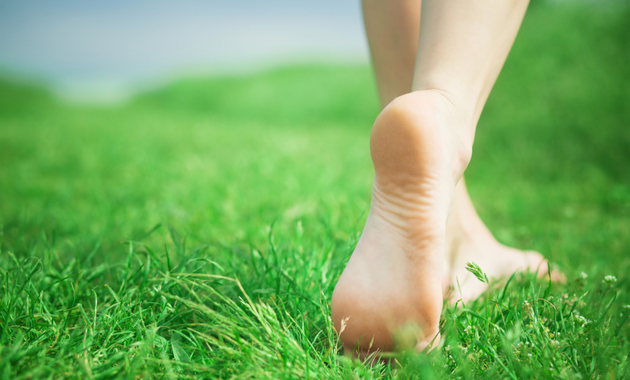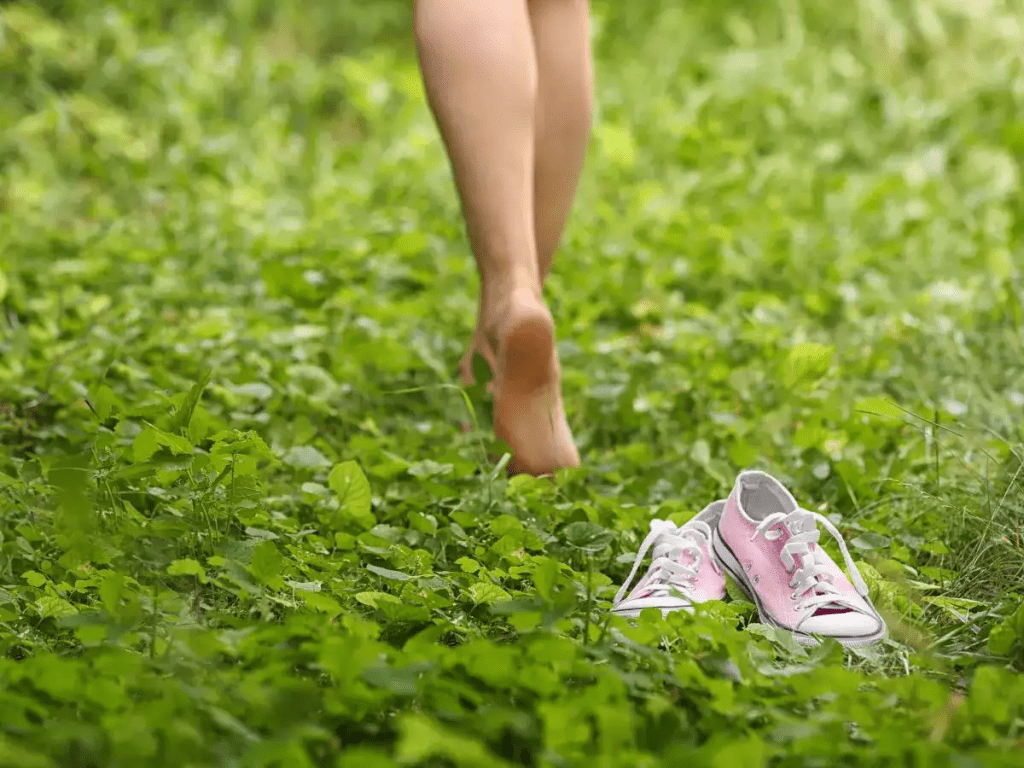In a fast-paced world dominated by technology, my nana insists on walking barefoot on grass as part of her daily routine. While it might sound eccentric, she believes this simple practice works wonders for her health. But what makes this seemingly quaint ritual so appealing, and why do others swear by it? Let’s uncover the science, tradition, and potential benefits of walking barefoot on grass—and why it might be worth a try.
The Ancient Roots of Barefoot Walking

Walking barefoot, often called “earthing” or “grounding,” has deep historical roots. Many ancient cultures viewed direct contact with the earth as essential for health and well-being.
- Indigenous Practices: Indigenous communities worldwide naturally embraced barefoot living, fostering a deep connection to the land.
- Eastern Philosophies: Traditions like Ayurveda and Chinese medicine link barefoot walking to improved energy flow and balance in the body.
- Modern Renaissance: In Western societies, a growing interest in natural living has reignited the appeal of barefoot walking as a way to reconnect with nature and combat stress.
This practice has stood the test of time, hinting at its potential to positively impact physical and mental health.
What Is Grounding (Earthing), and Why Does It Matter?
Grounding, or earthing, involves making direct contact with the earth’s surface. Proponents argue that this connection allows the body to absorb the earth’s electrons, which can neutralize harmful free radicals. These free radicals are unstable molecules that contribute to inflammation, aging, and disease.
Modern Lifestyles vs. Grounding:
- Insulated footwear and synthetic floors prevent contact with the earth, creating a “disconnect.”
- Grounding practitioners believe this disconnect disrupts our natural balance, leading to chronic stress and inflammation.
The grounding theory posits that restoring this balance through barefoot walking can improve physical and emotional health.
Health Benefits of Walking Barefoot on Grass
So, what’s in it for you? Advocates claim that walking barefoot on grass offers a range of health benefits. Here are some key reasons why this practice is gaining popularity:
- Reduced Stress and Anxiety
Feeling the cool grass beneath your feet promotes relaxation. The practice encourages mindfulness, helping you stay present and reduce stress. - Improved Sleep
Grounding has been linked to better sleep patterns, potentially by balancing cortisol levels (the stress hormone). - Enhanced Circulation
The gentle stimulation of reflexology points on your feet can improve blood flow and organ function. - Reduced Inflammation
Studies suggest grounding may decrease inflammation, benefiting those with chronic pain or conditions like arthritis. - Mood Boosting
Spending time outdoors while barefoot can uplift your spirits, offering a mental health boost akin to a mini-vacation.
The Science Behind Grounding

While anecdotal evidence is abundant, what does science have to say about barefoot walking?
- Reduced Inflammation: A study in the Journal of Environmental and Public Health suggested that grounding could improve immune responses and reduce chronic inflammation.
- Improved Stress Response: Research indicates that direct contact with the earth may lower cortisol levels, helping the body manage stress more effectively.
- Pain Relief: Some small-scale studies have found that grounding alleviates pain in individuals suffering from musculoskeletal issues.
Though these findings are promising, more extensive research is needed to establish definitive links between barefoot walking and health improvements.
Personal Experiences: Why My Nana Loves It
My nana is living proof of the benefits of barefoot walking—or at least she thinks so. Every morning, she strolls across the lawn, soaking up the sunrise while feeling the grass beneath her feet. She swears it helps her stay energetic, sleep better, and manage the occasional aches and pains of aging.
Her ritual has become more than just a habit; it’s a way of connecting with the world around her. She often says, “When you’re barefoot on the grass, you’re not just walking—you’re healing.”
While personal stories like hers are subjective, they emphasize the emotional and physical comfort many people associate with this practice.
Potential Risks and Precautions
Before you ditch your shoes and head outdoors, keep a few safety tips in mind:
- Watch Out for Hazards: Glass, thorns, or sharp rocks can easily injure unprotected feet. Always check the area beforehand.
- Be Mindful of Parasites: In some regions, certain parasites or bacteria may lurk in the soil, so choose clean, well-maintained areas.
- Medical Concerns: Individuals with diabetes or reduced sensation in their feet should consult a doctor before trying barefoot walking.
By being cautious, you can enjoy the benefits of barefoot walking while minimizing potential risks.
How to Get Started: Tips for Barefoot Walking

If you’re ready to give this grounding practice a shot, here are some practical steps to make it a safe and enjoyable experience:
- Choose the Right Spot
Find a clean, grassy area—like a park, backyard, or garden—free of debris and hazards. - Start Slow
Begin with short walks to let your feet adapt, especially if you’re used to wearing shoes all day. - Focus on Mindfulness
Pay attention to the sensations underfoot. Feel the texture of the grass, the temperature of the earth, and the connection to nature. - Inspect Your Feet
After each session, check your feet for cuts, scrapes, or irritation, and keep them clean.
By incorporating these steps, you can ease into barefoot walking and enjoy its potential benefits.
Alternative Ways to Ground Yourself
If walking barefoot isn’t an option for you, don’t worry—there are other ways to embrace grounding. Consider these alternatives:
- Grounding Mats: These specially designed mats mimic the effects of direct contact with the earth’s surface.
- Gardening: Digging in the soil and working with plants can provide similar benefits.
- Outdoor Meditation: Sitting directly on the ground, whether on grass or sand, can also promote grounding.
These methods allow you to stay connected to the earth, even if you can’t always walk barefoot.
Conclusion: Finding Balance Through Barefoot Walking
Walking barefoot on grass might seem like a small, insignificant act, but it holds surprising potential to improve your health and well-being. Whether it’s reducing stress, boosting mood, or connecting with nature, this practice invites us to slow down and embrace life’s simple pleasures. My nana’s advice reminds us that sometimes, the best remedies aren’t found in a bottle—they’re found right beneath our feet. Why not kick off your shoes and give it a try? You might just discover a new favorite habit.


